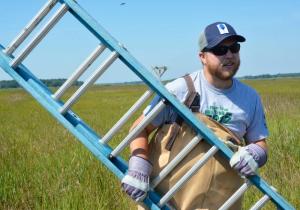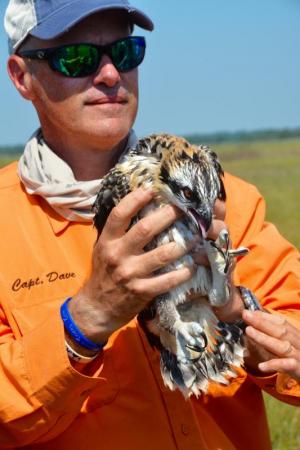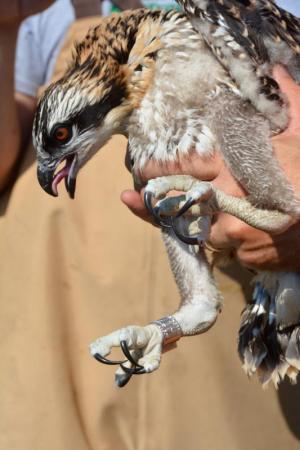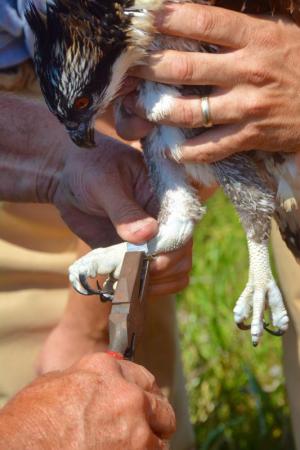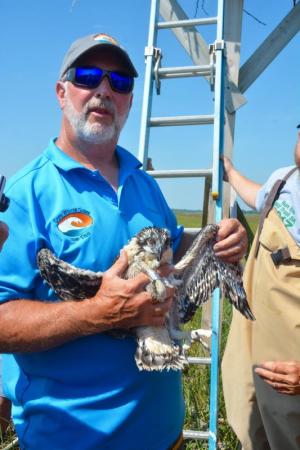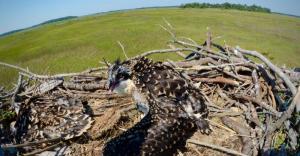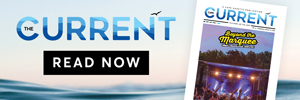In most cases, staff members of Cape Water Tours are able to reach osprey nests from the water to band young birds. But sometimes, it requires wearing waders and loads of bug spray to walk out into a marsh to reach a nest.
Capt. Dave Greene and Steve Cardano did just that June 30 to band two chicks in a platform nest about 400 feet into the marsh put into place by Abbott's Mill Nature Center, the Town of Slaughter Beach and the Delaware Nature Society in the 109-acre Marvel Salt Marsh Preserve in Slaughter Beach along the coast of Delaware Bay.
The federal bands are numbered and recorded in order that the bird's migration patterns, lifespan and behavior can be tracked.
Cardano, who has banded more than 5,000 osprey, said osprey have made a remarkable comeback since the use of DDT was banned in 1972. He said the pesticide nearly decimated the osprey and eagle population because it caused thin-shelled eggs that mothers broke when they sat on them.
Another positive step has been the addition of more permanent platforms for osprey to build nests throughout the coastal region. He said osprey mate for life – although they migrate separately – and return to the same nesting area year after year. “It's important for humans to maintain the nest sites or it disrupts the nesting cycle,” Cardano said. “They have grown to tolerate human activity.”
In addition, he said, it's important to provide predator barriers at the bottom of platforms.
He said studies show that less than half of young birds survive past their first year. But if they do survive that first year, their survival rate jumps to 80 percent, he said. It's not unusual for osprey to live 15 to 20 years, or even more in rare cases. Nests in the Cape Region typically have two or three young birds.
The nest in Slaughter Beach had one egg that did not hatch and two six-week-old birds. Cardano said the chicks are nearly full grown and will start flying in about two to three weeks. Osprey spend their winters in Venezuela and Columbia and return to the area around St. Patrick's Day, Cardano said.
On the Cape Water Tours and Taxi schedule are morning ecotrips and evening sunset tours. Go to capewatertaxi.com for more information.
For more information about the Delaware Nature Society's Abbott's Mill, go to DelNature.org/AbbottsMill.















